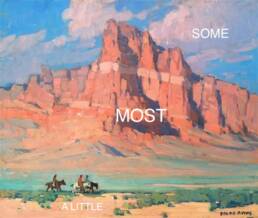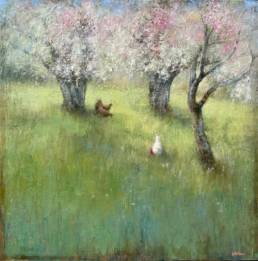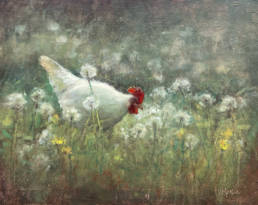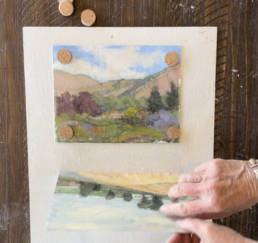A trustworthy business relationship between the gallery and artist is one of the most crucial factors of being a successful, professional artist. Recently, I asked fellow artist/blogger Lori Woodward Simons if she would write a post concerning gallery and artist relationships and how the artist can build a collectors list while working with their gallery.
Gallery Partnership Marketing
by guest artist/author: L. Woodward Simons
If we artists remember that we’re in a partnership with our galleries, and if that partnership has built mutual trust, there’s no good reason why gallery owners should avoid giving us the names and contact information of those who collect our work.
But how do we ask for those names diplomatically? It gets easier if you’ve been working with a gallery for awhile and you’ve already established trust. But even so, dealers are fearful that we ask for contact names so that we can sell behind their backs. In my own experience, I’ve found it helpful to explain to my dealers (in a letter or verbally) how my having access to names increases the likelihood of gallery sales.
Explain The Advantages of An Email Newsletter
In this proposal letter (or if you don’t like to write, you can practice verbally), consider making some of the following points:
Stating My Case to My Gallery Dealer
(statements about how my having names will increase their business)
When I have a new artwork completed, I can email a newsletter to my previous buyers and put a link to the gallery where it’s showing. I can also talk about why I paint certain subjects and a bit more about the objects or place in the painting.
Newsletters educate and inform collectors so that they begin to think of art collecting as an ongoing part of their lives. I like to include a bit of art history, why I paint, where I paint etc. This only establishes a stronger connection between those who already love my work and the idea of continuing to collect. It whets their appetites for collecting even when they haven’t been in the gallery for a while, and it’s far less expensive than magazine ads.
Gives the gallerya break – some of the legwork is done by the artist. They don’t have to worry about contacting all their clients all the time. By my having the ability to do so – only establishes me as a stronger player in their gallery. Sometimes the gallery forgets to promote their lesser artists while they spend most of their time promoting the artists who already have high visibility.
When I have the names of those who have interest in my work, I have the ability to take promotion into my own hands. This ability allows me to market my work to those who already enjoy it – which in turn may increase gallery sales.
Ethics Goes Both Ways:
In order for me to get access to this information, my honesty must be flawless. If I sell for a lesser price or secretly behind the gallery’s back, then perhaps I don’t deserve representation there. It’s far easier to get names from your galleries if you sell only through commercial dealers and not on your own. But even if you do sell directly from your website, EBay or other venues, it still makes sense for the dealer to share names of your buyers.
Collectors Always Pay Retail for My Work
So when does the gallery deserve a commission, and when do I deserve the commission? If the client first found out about my work at the gallery, or a magazine ad placed by the gallery,or has actually purchased my work from that gallery, I automatically send the gallery their commission. when the collector has seen my work at my website, an outdoor show or invitational show that I participated in, I am the sales person, so I get the commission. What this means is that the buyer always pays the retail price – same as if they bought it through the gallery.
When I’ve asked my dealers for names and addresses, not one has turned me down. Why? Because they trust me. Honesty goes both ways, and when you have established a long and truthful relationship with a gallery dealer, you gain the freedom to work with them hand in hand. When the gallery finally “gets it” that giving their artists the names of collectors enhances sales, they realize that there was nothing to fear all along. But, first you need to know who to find the right gallery in order to have a successful gallery/artist relationship. http://woodwardsimons.com







